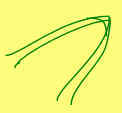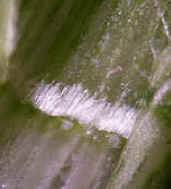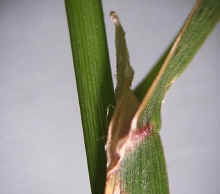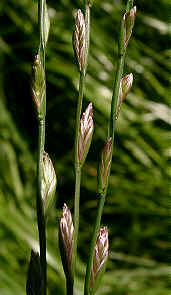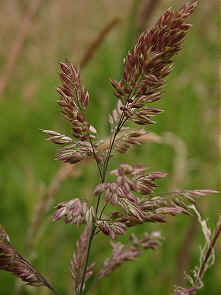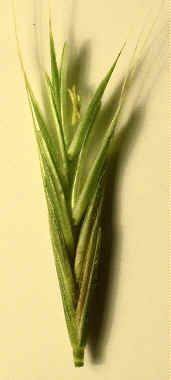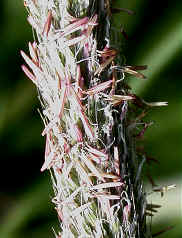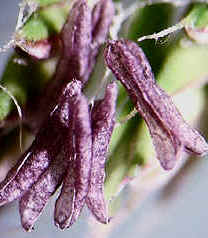
Ten Top Tips for Identifying Grasses
| Pointer | Explanatory Notes |
|||
| 1. Habitat Where the grass is found. |
Different grasses prefer different types of habitat. For example, some species thrive in shady woodland conditions, whereas others need more light and prefer open ground. Habitat species lists for grasses can help to narrow down the number of possible species. | |||
. |
||||
| 2. Habit Is it perennial or annual? Is it tufted or creeping? Is it rhizomatous or stoloniferous? |
In annual grasses (which
grow, flower and die within the same year) all or most of the shoots will flower.
Perennial grasses, in contrast, may live for many years. In these grasses, some of the
shoots will flower and some will not. Some grasses grow in localized clumps (tufted), while others spread out, often over large areas (creeping). They do this via stems which either creep along the top of the ground (stoloniferous) or underneath it (rhizomatous). Stolons tend to have greenish/purplish stems, while rhizomes are whitish or brownish. Stolons also have complete green leaves at the nodes, whereas rhizomes have only white/brown scale-like leaves at these points. |
|||
. |
||||
| 3. Leaf sheaths Are they hairy or glabrous? Rounded or keeled? Closed or open? |
The leaf sheaths are the
part of the leaf which encircles the grass stem, before it opens out into the leaf blade. Glabrous
means it has no hairs. A hand lens may be needed to check this feature. Some grass stems feel rounded when you run your hand up the encircling leaf sheaths, while other species may have a distinct ridge or keel, like that of a boat, on one side. The leaf sheath may either encircle the stem with the edges joined to make a complete tube (closed), or one margin of the sheath may overlap the other (open). |
|||
. |
||||
| 4. Leaf blades Are they hairy or glabrous? Flat or rolled? Pointed or hooded tipped? Rolled or folded when new? |
The leaf blades, where they
leave the stem, open out into either a flat blade, or a more tubular leaf blade with
inrolled edges.
New young leaves growing up inside the sheathing bases of older leaves, are either rolled longitudinally around the stem with one margin innermost, or alternatively folded in half longitudinally along the midrib. |
|||
|
||||
| 5. Ligules Are they membranous or a fringe of hairs? Are the ligules short or long? (Diagram here) |
||||
. |
||||
| 6. The Inflorescence Is it a panicle, raceme or spike? |
|
|||
. |
||||
| 7. Spikelets Are they one, two or many flowered? (Diagram here) |
|
|||
. |
||||
| 8. Glumes Are they hairy or awned? How many veins do they have? What size are the veins? |
The glumes
are the outermost pair of scales enclosing the spikelet at the base. They protect the
flowers inside before opening. The glumes may be hairy and/or may have a bristle-like extension called an awn. Examination with a hand lens will reveal the veins on the glumes, as well as awns, if they are present. If the awns are long, they may easily be seen with the naked eye. |
|||
. |
||||
| 9. Lemmas As for glumes. (Diagram here) |
Each floret inside a spikelet is protected by its own individual pair of covering scales, one called the palea and the other the lemma. The lemma is the outer scale of the pair. These have diagnostic features similar to those described for glumes above. | |||
. |
||||
| 10. Anthers How long are they? |
|
|||
Related Links
